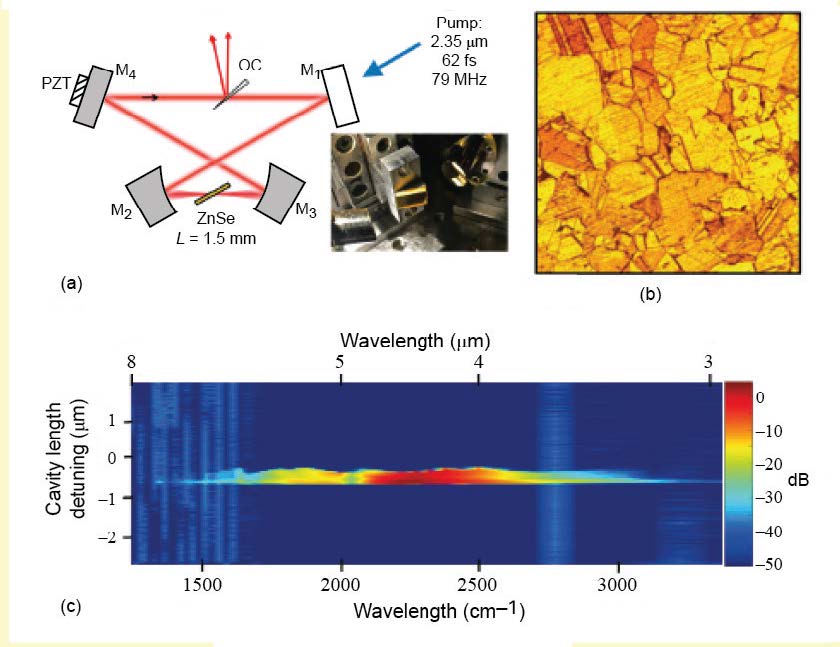It has commonly been assumed that perfect crystals are paramount for the operation of frequency converters based on quadratic nonlinearity, χ(2), such as optical parametric oscillators (OPOs). The necessary phase- matching condition is usually achieved either by a proper crystal orientation, or via quasi-phase matching through controlled flipping of crystalline domains. Apparently, as our recent results show, a disordered material consisting of randomly-oriented domains, with the nonlinear wave- coupling coefficient arbitrarily varying between its maximum (dNL) and minimum (-dNL) values, can perform equally well.
Our approach is based on the phenomenon known as random phase matching (RPM) [1,2]. RPM in disordered χ(2) materials can be described by the random walk (‘drunken sailor walk’) theory that also accounts for diffusion and heat transfer. RPM eliminates the need for orientation flipping and, most importantly, enables 3-wave interactions with extremely large bandwidths. A broadband and flat response in RPM is the result of phase randomization due to arbitrary distribution of the crystalline domains, which eliminates destructive interference. The price to pay, however, is a slow growth of the output signal since the output intensity in RPM scales linearly with sample length, as opposed to the quadratic dependence for both perfect phase and quasi-phase matching. Although in continuous-wave and nanosecond laser regimes RPM is much less efficient, than the conventional quasi-phase matching process [2], our finding is that RPM works nicely with femtosecond laser pulses.
Konstantin Vodopyanov and his team demonstrated the world’s first OPO based on RPM [3]. The main trick was to prepare a sample (a 1.5-mm- thick plane-parallel polished ZnSe ceramic) such that the average grain size was close to the coherence length of a 3-wave interaction (~100 µm). The bow-tie ring-cavity OPO was synchronously pumped by a Kerr-lens mode-locked Cr2+:ZnS laser (λ = 2.35 µm) and operated near degeneracy. The OPO oscillation threshold was only 90 mW of the average pump power and the output spectrum spanned more than an octave (3–7.5 μm), thanks to the broadband nature of RPM. The observed pump depletion, as high as 79%, indicates that with an optimized outcoupling, one can obtain conversion efficiency approaching 100%. This result is essential for numerous producing ultrabroadband frequency combs in the challenging mid-IR range.
References:
- E. Yu. Morozov, A. S. Chirkin, Quantum Electron. 34, 227 (2004).
- M. Baudrier-Raybaut, R. Haïdar, Ph. Kupecek, Ph. Lemasson, and E. Rosencher, Nature 432, 374 (2004).
- Q. Ru, N. Lee, X. Chen, K. Zhong, G. Tsoy, M. Mirov, S. Vasilyev, S. Mirov, and K. Vodopyanov, Opti ca 4, 617 (2017)

